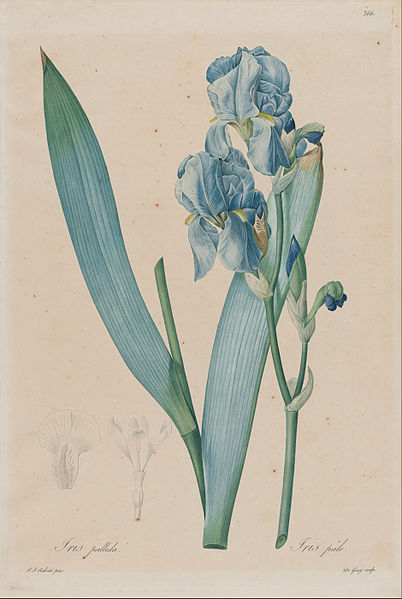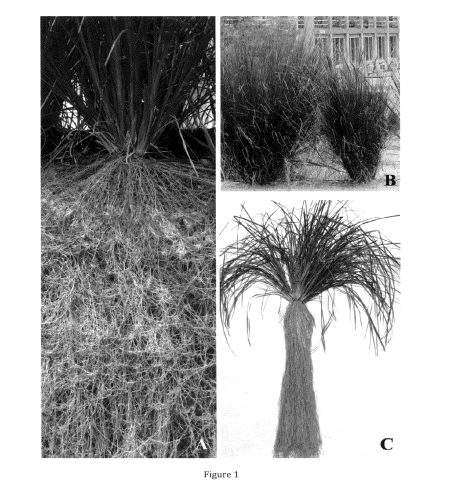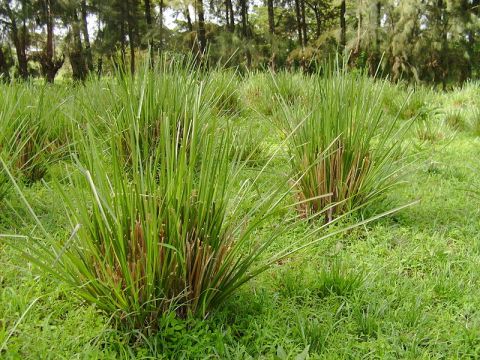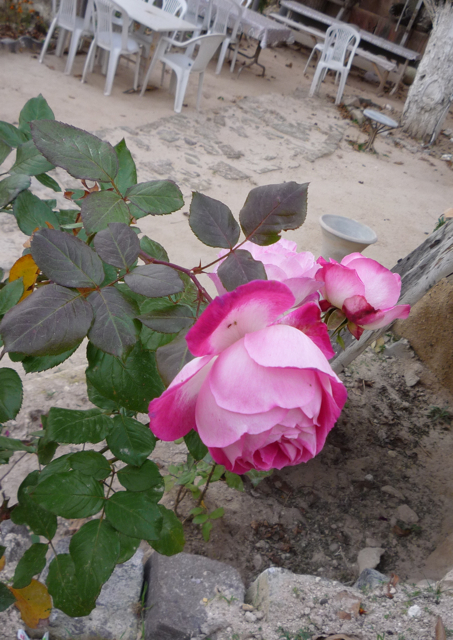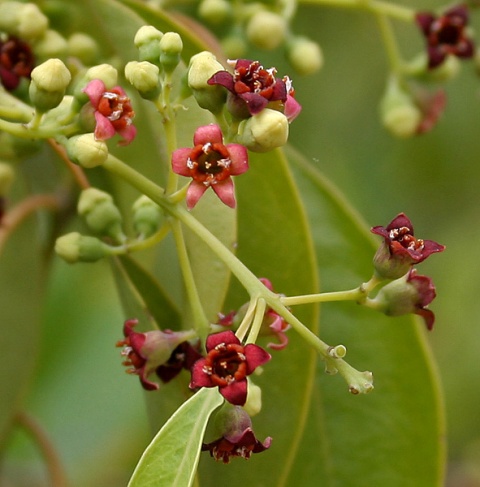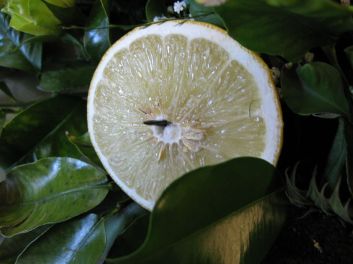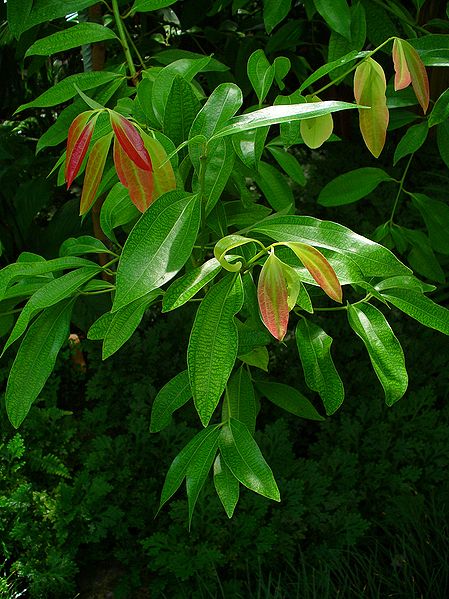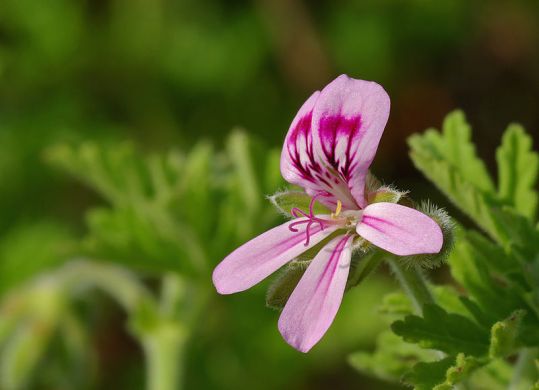Readings: Antifungal Properties of Essentials Oils
April 27, 2014 § Leave a comment
This isn’t me doing science, as I am not a scientist. At least, not this kind of scientist. I can, however, read research and data, and I am very curious about scientific research versus folk knowledge. I have a lot of respect for folk knowledge, but many people saying an oil cures cancers or herpes doesn’t mean it is so. Sometime a good double blind study is in order.
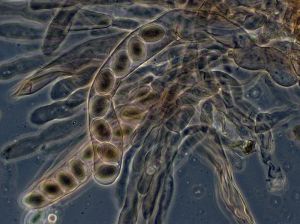
I am interested in safer biological fungicides for use in a variety of balms and creams, notable those used on feet. Socks in work boots create a warm wet environment highly conducive to fungal growth. I think you know what I mean, so I won’t go into great detail. While fungus is indeed natural, and the source of my blog name, fungus growth often occurs because we humans are so good at isolating heat and moisture. Ironically, the ability to seal a vessel, building, garment, or footwear contributes to the likelihood it will grow some nice molds. « Read the rest of this entry »
Ingredients List: Orris Root (Nice Things are Really Nice)
April 22, 2014 § Leave a comment
Sometimes ‘Fancy’ things are a little nicer than regular things. Sometimes they are a little too rich or obtuse to take in. Now and then, they are really really nice. Orris root is one of the latter.
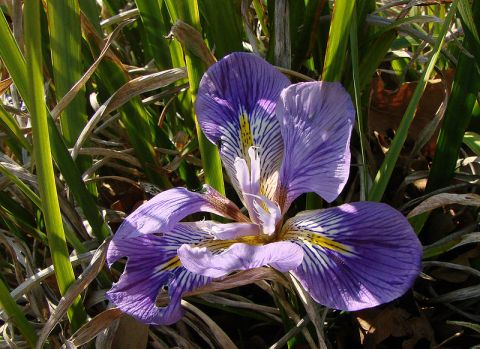
Orris root butter is extracted from the aged roots of sweet irises, primarily Iris Palladia. While some sources say that orris smells nothing like the iris flower, I have to disagree. Irises, like many highly cultivated flowers, come in a fairly wide range of scents. The most common scented irises are very floral-grape Popsicle. The pale blue/lavender irises of my mothers garden long ago, I swear, were the icy-cool wood violet scent of skin-warmed orris root.
Orris root is more than a violet smell-alike. It is icy, still, calm, and utterly ethereal. White most fragrances reference the garden on the sunniest days, orris is the perfect moment when clouds cover the sky on a fresh spring day.
Orris was cultivated in medieval Italy. It is referenced as an agent used to make ‘sweet clothes’ by boiling one’s underwear with orris roots. This must have smelled amazing.
Orris was also a major ingredient in cosmetics, as it retains moisture. For people of an older, or classier, generation, orris would have been a ‘makeup’ scent.
Of all the classic perfumery ingredients, orris and sandalwood wrestle as my favorites. The butter is damned expensive, thought. I think I’ll try to keep it as a major note in a single perfume to highlight its beauty rather than spread it through everything. Specifically, the coolness reminds me of a library or archive. I am going to experiment with pairing it with Virginia cedarwood (Ticonderoga pencils) and a tea note for a quiet scent.
Or maybe I’ll go nuts and make a flower extravaganza. Either way, I am wearing an unmixed dilution to bed tonight after writing this (made with a wee dusting on the tip of a needle and a drop of oil!)
Ingredients List: Vetiver
April 14, 2014 § Leave a comment
Vetiver is among my prime examples of an odd and wonderful scent one might reject at first brush and whose descriptions do it no justice. Give it one sniff and it is weird, smokey, and damp. Give it five minutes and it is absolutely gorgeous. It is a root extract from a tropical grass, and maintains that fragrant earth note. Although the earthiness and vegetative notes are ever present, Vetiver has a number of distinctive regional scents, with Haitian being the brightest and Indian the smokiest.
If I were to describe or compare, I would say something between sphagnum, sweetgrass, grass in a fire, and good cold patchouli.
If you’ve never burned grass, I highly recommend it. If you’ve nevered burned sweetgrass, you have my condolences.
Outside of its oil, vetiver is an amazing plant. It has a massive root system and very rapid growth, making it ideal for erosion control. The hybrid pictured beside doesn’t spread laterally or by seed, making it easier to contain the spread of the plant.
 It is non-toxic to livestock and humans, making it safe to use in traditional agricultural areas. This is important as many areas in developing tropical nations are in need of cheap, fast, and lasting erosion erosion control.
It is non-toxic to livestock and humans, making it safe to use in traditional agricultural areas. This is important as many areas in developing tropical nations are in need of cheap, fast, and lasting erosion erosion control.
Vetiver isn’t the perfect plant, but it may come close.
Ingredients List: Rose Otto
April 6, 2014 § Leave a comment
I’ve always had a thing for wild roses. I was born in June and was told very early on that they were my flower. I took that to heart and made them so. As a child, I would eat handfuls of petal to absorb their lovely powers. Still today, I find it hard not to nibble or pluck a few when wild roses are plentiful.
Rose otto smells exactly like pink, red and wild roses taste. Green, sharp, Clear, bright, and crisply floral. There is little honey or creme: this is a champagne sweetness. There is also nothing powdery or pollinate about most Turkish Rose otto, just brightness and the taste of flowers.
Blending notes: green, pink, and bright. Low to medium endurance. Low sweetness. Drys down to an almost resinous glowing spice rose.
Ingredients list: Sandalwood
April 6, 2014 § Leave a comment
“Sandalwood perfumes even the axe that hurls it down! The more we rub sandalwood against a stone, the more its fragrance spreads. Burn it, and it wafts its glory through the entire neighbourhood. Such is the enchanting beauty of forgiveness in life.”- Chinmayananda Saraswati
Good sandalwood is one of the best smells ever. It is glowing, soft, warm, deep, sweet, and enduring. It clings to florals and makes them balm-like and sun drenched. I didn’t know that about sandalwood until recently, because like amber and patchouli, I associated it with both harsh woody oils sold in new age shops and dollar store incense. True sandalwood is elegant and doesn’t have a harsh note or edge in it.
Apparently there are a few species which contain the key fragrant chemicals that give sandalwood its scent. The best known sandalwood, Santalum album, is a small tree from India which has been mismanaged and over-harvested to the point of near extinction in the wild. It is now heavily cultivated, with some co-operative and fair trade options. Two Hawaiian Sandalwoods, Santalum ellipticum and Santalum freycinetianum, share the same story.

So what to do? The best, most special and tenacious ingredient that makes all other ingredients awesome comes from endangered species. I am of the opinion that buying sustainably cultivated sandalwood with a clear lineage is still sustainable. Australia manages its industry carefully, and so for now that’s what I’ll try.
Ingredients List: Bergamot FCF
April 3, 2014 § Leave a comment
I love all things bitter, sour, and tart. I love chiniotto, kumquats, wild oranges, lemons, and Earl Grey tea. I thought pure bergamot and I were going to be best friends and run into the sunset together. Bergamot EO has a little whiff of citronella to me. Also, aftershave and dudes. But I believe. I need to try out some heavier notes. Bergamot, we need to learn to love each other.
Update- It’s getting better. Also- no reaction or irritation at all to 50% blend.
Blending notes: Medium, stronger in mix. Citronella candles. Fresh, sharp, citrus.
Photo by Leslie Seaton, Wiki commons
Ingredient List: Cinnamon Leaf
April 3, 2014 § Leave a comment
Update: I had a strong dermal reaction to a dab of 10% dilution (no reaction to 2%). May use under 1%, may not use at all.
I chose cinnamon leaf over bark because someone told me it’s easier on the skin. I suspect that advice was a little alarmist, as I am certainly not dabbing pure oils on. While I do not regret the decision, this is not cozy, winter treat cinnamon. This is cinnamon that smells like trees smell, sharp and bright. I need to find some good notes to round it out, but I think it will work out well.
Blending Notes: Medium strength, smelled stronger in mix. Bright and almost green with cinnamon oil. This scent grows and grows and grows. At three days, it’s still getting bigger in a blend.
Cinnamon Foliage by A. Zell from Wiki Commons
Ingredients List: Ylang Ylang
April 3, 2014 § Leave a comment
Oh Ylang Ylang, you’re so fancy.
Ylang Ylang is so sultry and yet so sweet. Like a shirt that’s a tad too sheer or lacy black tights. I think my association with Ylang Ylang goes back fifteen years to reading somewhere that it was the sexiest scent. I bought some essential oil and wore it for the effect. I’m sure it worked, because I’ve never stopped believing.
More recently, I bought some Lush 2 in1 shampoo while traveling in Italy. It was a combination of chamomile and ylang ylang scents so luscious I open the little tin every now and then just to sniff it.
Blending notes: Strong- harder to smell off skin so beware when mixing. Very sweet and heady, long-lasting. Low mellow dry down. Rich.
Ingredients list: Rose Geranium
April 3, 2014 § Leave a comment
I was excited to pick up rose geranium because I thought I’d get to smell a Brand New Thing, which I love. To my great surprise, rose geranium was very familiar. After the initial sharp green, I was suddenly in Vancouver’s little India with small shop full of floral waters, sweets, and the pungent smell of my old new friend geranium rose.
Who knew?
After diluting and trying a drop on my skin, I could find the tea rose and old English garden crispness. By my association is still strong enough that I am picturing saris, tin lunch boxes, and honey-soaked sweets when I get a whiff.
Notes: Overall, this is an extremely strong and enduring scent. It overpowered Ylang Ylang and Cinnamon leaf with ease. It smells very clean after a few hours, like fresh sheets hung in a garden. It’s a very specific rose (what I would have called rosewater), not damask or wild. I might dilute this to mix so I can add it very very slowly.
